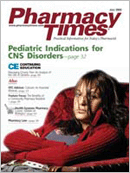Publication
Article
Pharmacy Times
Topical Treatments for Contact Dermatitis
Contact dermatitis is an inflammatory skin disorder that accounts for approximately 5.7 million primary care provider visits and numerous requests from patients for pharmacists to evaluate and recommend products to aid them in the relief of this condition.1 There are 2 types of contact dermatitis: irritant contact dermatitis (ICD) and allergic contact dermatitis (ACD).
ICD, the most common type, is an inflammatory reaction of the skin due to exposure to irritants such as chemicals, soaps, or household cleaning products. It usually resembles a burn.2 If an individual is exposed to a strong irritant, such as a chemical, symptoms may begin occurring immediately.
ACD is an inflammatory reaction of the skin due to an exposure to an allergen.1 In 10% to 20% of contact dermatitis cases, allergen exposure is the cause.1 Contact dermatitis may appear after a single exposure or after multiple exposures to the same substance. Common substances associated with contact dermatitis include the following1,2:
- Poison ivy, poison oak, poison sumac
- Other plants
- Nickel or other metals
- Strong acids (hydrochloric, nitric, sulfuric)
- Strong alkalis (potassium, calcium hydroxides, sodium)
- Rubber
- Cosmetics, fragrances, perfumes
- Fabrics and clothing
- Detergents
- Solvents
- Adhesives
- Epoxy resins
- Chromium salts
- Formaldehyde
- Lanolin
- Latex
Symptoms
Characteristic symptoms of contact dermatitis include the following2:
- Pruritus of the skin at the exposed area
- Inflammation of the exposed area
- Tenderness of the skin at the exposed area
- Localized swelling of the skin
- Warmth at the exposed area
- Rash at the site of exposure Lesions of any type: redness, papules, vesicles, blisters May involve oozing, draining, or crusting May become scaly, raw, or thickened
Treatment
A variety of topical preparations are available as nonprescription items for treating minor cases of contact dermatitis (Table).
Role of the Pharmacist
Pharmacists can aid patients who suffer from contact dermatitis in properly identifying the causative substances; aid them in selecting the appropriate treatment options; and counsel them on the proper use and the adverse effects associated with these products. Pharmacists also should advise patients when it is necessary to seek medical treatment from a physician. Patients should be counseled on taking the proper precautions to avoid possible allergens or irritants that are responsible for causing dermatitis. In addition, pharmacists can inform patients about nonpharmacologic measures to use in treating contact dermatitis to ensure optimal therapeutic outcomes and to avoid further complications.
For a list of references, send a stamped, self-addressed envelope to: References Department, Attn. A. Stahl, Pharmacy Times, 241 Forsgate Drive, Jamesburg, NJ 08831; or send an e-mail request to: [email protected].

Newsletter
Stay informed on drug updates, treatment guidelines, and pharmacy practice trends—subscribe to Pharmacy Times for weekly clinical insights.






